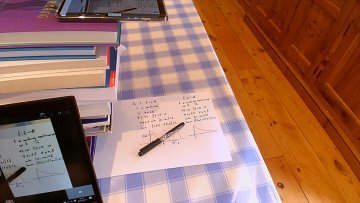14:15
Homological mirror symmetry for log Calabi-Yau surfaces
Abstract
Given a log Calabi-Yau surface Y with maximal boundary D, I'll explain how to construct a mirror Landau-Ginzburg model, and sketch a proof of homological mirror symmetry for these pairs when (Y,D) is distinguished within its deformation class (this is mirror to an exact manifold). I'll explain how to relate this to the total space of the SYZ fibration predicted by Gross--Hacking--Keel, and, time permitting, explain ties with earlier work of Auroux--Katzarkov--Orlov and Abouzaid. Joint work with Paul Hacking.
Dynamic default contagion: From Eisenberg--Noe to the Mean field
Abstract
Abstract: In this talk we start by introducing a simple model for interbank default contagion in the vein of the seminal clearing frameworks of Eisenberg & Noe (2001) and Rogers & Veraart (2013). The key feature, and main novelty, consists in combining stochastic dynamics of the external assets with a simple but realistic balance sheet methodology for determining early defaults. After first developing the model for a finite number of banks, we present a natural way of passing to the mean field limit such that the original network structure (of the interbank obligations) is maintained in a meaningful way. Thus, we provide a clear connection between the more classical network-based literature on systemic risk and the recent approaches rooted in stochastic particle systems and mean field theory.
Deep reinforcement learning for market making in corporate bonds
Abstract
In corporate bond markets, which are mainly OTC markets, market makers play a central role by providing bid and ask prices for a large number of bonds to asset managers from all around the globe. Determining the optimal bid and ask quotes that a market maker should set for a given universe of bonds is a complex task. Useful models exist, most of them inspired by that of Avellaneda and Stoikov. These models describe the complex optimization problem faced by market makers: proposing bid and ask prices in an optimal way for making money out of the difference between bid and ask prices while mitigating the market risk associated with holding inventory. While most of the models only tackle one-asset market making, they can often be generalized to a multi-asset framework. However, the problem of solving numerically the equations characterizing the optimal bid and ask quotes is seldom tackled in the literature, especially in high dimension. In this paper, our goal is to propose a numerical method for approximating the optimal bid and ask quotes over a large universe of bonds in a model à la Avellaneda-Stoikov. Because we aim at considering a large universe of bonds, classical finite difference methods as those discussed in the literature cannot be used and we present therefore a discrete time method inspired by reinforcement learning techniques. More precisely, the approach we propose is a model-based actor-critic-like algorithm involving deep neural networks
13:00


